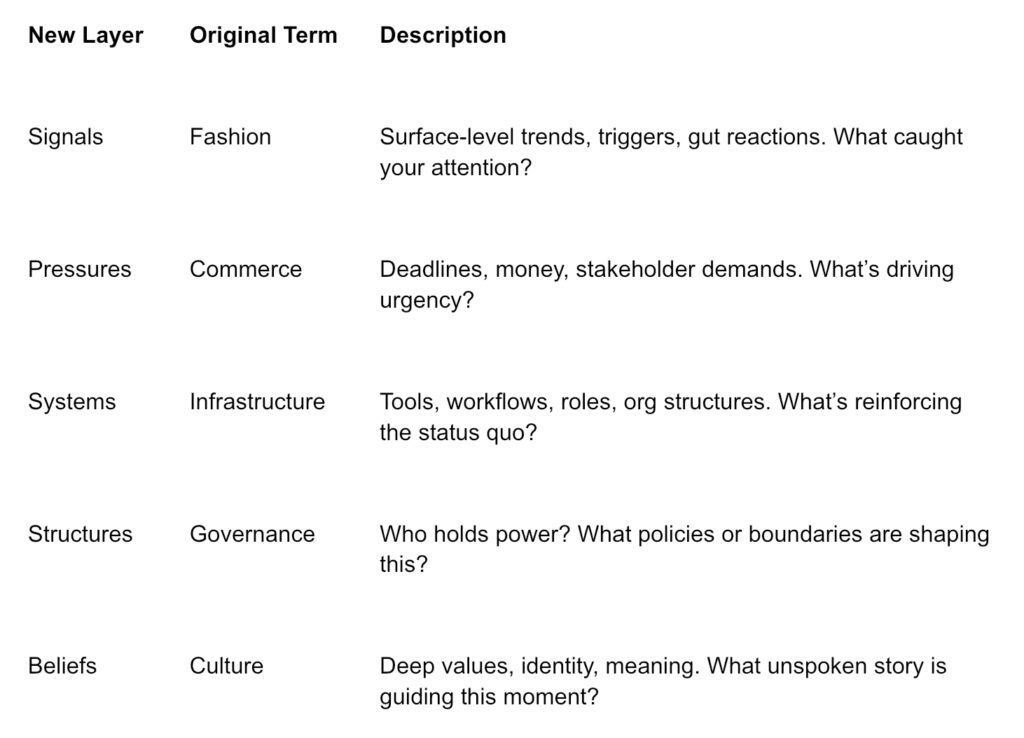Some problems come at you like a checklist. You know the drill. Clear inputs, known outputs. A tidy process leads to a tidy solution.
But then there are the other problems. The ones that don’t follow a script. They’re foggy, layered, emotionally charged, and hard to name…let alone solve.
Those are the problems that really matter. And they’re the ones that tend to get stuck.
Why Some Problems Don’t Budge
We often default to solving problems the way we always have: quickly, efficiently, with tools we trust. But what if the challenge isn’t like the last one? What if the very nature of the problem is different this time?
Sometimes we reach for strategy before we’ve truly understood the situation. We rush to fix before we’ve faced what’s real.
In my work with leaders, I’ve found that problem-solving isn’t just about knowing what to do. It’s about learning how to see.
The first question isn’t “What should I do?”
It’s “What is this really?”
That shift—from action to awareness, problem solving to truth seeking—is the foundation of a better method.
Five Steps to Seeing Clearly and Acting Wisely
What follows is a method I use with clients in complexity. It’s not rigid or linear, but it gives structure to the disorder. It creates space for curiosity, honesty, and good decision-making.
1. Face Reality
Begin by telling the truth about what’s happening. Not just the visible issue, but the surrounding emotional, organizational, and relational context.
This is the moment where we stop avoiding and start noticing.
There’s a This American Life episode called “Swim Towards the Shark” (Episode 837) that’s stayed with me. In it, Sarah Polley shares her story of living with post-concussion syndrome. A specialist gave her counterintuitive advice: to engage with the very things that triggered her symptoms. In other words, run towards the danger. That phrase became the title of her book—and it’s a powerful metaphor for leadership. Sometimes the only way forward is through. Not around the pain. Not avoiding the complexity. But heading straight into it—with intention, support, and courage.
2. Make Sense
Instead of jumping to solutions, pause to understand.
Why is this really a problem?
What’s being felt or avoided?
What values, fears, or patterns are entangled in it?
3. Discern the Pattern
Ask: Is this familiar? Have I been here before? If so, how is this situation different?
And if it’s new—what’s it asking of me that I haven’t had to do before?
4. Choose a First Step
Don’t try to solve everything. Choose something small and purposeful that creates movement.
The first aligned action often changes the way forward.
5. Reflect and Adjust
Every step offers feedback. What did you learn? What shifted? What needs to change (inside or around you) before the next move?
Here’s the Insight: Not All Problems Live at the Same Depth
This is where pace layering comes in.
Originally developed by Stewart Brand, the idea is that the world changes at different speeds across different layers like fashion, commerce, infrastructure, governance, and culture. Fast layers innovate. Slow layers stabilize. Change flows through all of them, but in different ways and on different timelines.
It’s a brilliant framework for understanding systems. But it’s also incredibly useful when you’re working through complex personal or organizational problems.
A New Set of Layers for Sensemaking
Brand’s original terms are powerful, but can feel abstract in everyday leadership work. So I’ve adapted them into more accessible labels that map to how problems actually show up in the lives of leaders and teams.
Here are the Five Layers of Experience I invite clients to explore:

Why This Matters for Problem-Solving
Each step in the 5-part process can be explored through any one of these layers. But if you only stay at the top (Signals and Pressures), your solutions will be fast and shallow.
Quick wins, yes. Lasting change? Not likely.
Systemic transformation requires us to work across all the layers. And it requires us to do it at every stage of the process.
Imagine facing reality not just by naming the surface problem, but also by exploring how your culture, policies, or belief systems helped create it.
Imagine making sense of your situation not just through your emotions, but by examining the invisible pressures and outdated systems that are quietly shaping your decisions.
Imagine choosing a first step that’s not just a response to urgency—but a move that resonates across values, structure, and culture.
This is what leadership can look like in complexity.
Where Thinking Partnerships Come In
This work isn’t easy. It’s vulnerable. It’s often slow. And it can be hard to do on your own, especially when you’re running into the danger.
That’s where a good Thinking Partnership makes a difference.
A Thinking Partner doesn’t tell you what to do.
They don’t hand you a solution.
They help you see across layers, across patterns, across time.
They help you pause in the right moments, act in aligned ways, and reflect with courage.
They sit beside you in the ambiguity and ask the kinds of questions that make new perspectives possible.
A good Thinking Partnership helps you discern where you are, what you need, and how to be brave in that knowing.
If you’re in the midst of something complex or on the edge of something important, I’d love to work with you.
Let’s make sense of it together.
References you may find useful
Brand, Stewart. The Clock of the Long Now: Time and Responsibility (1999)
This American Life, Episode 837

